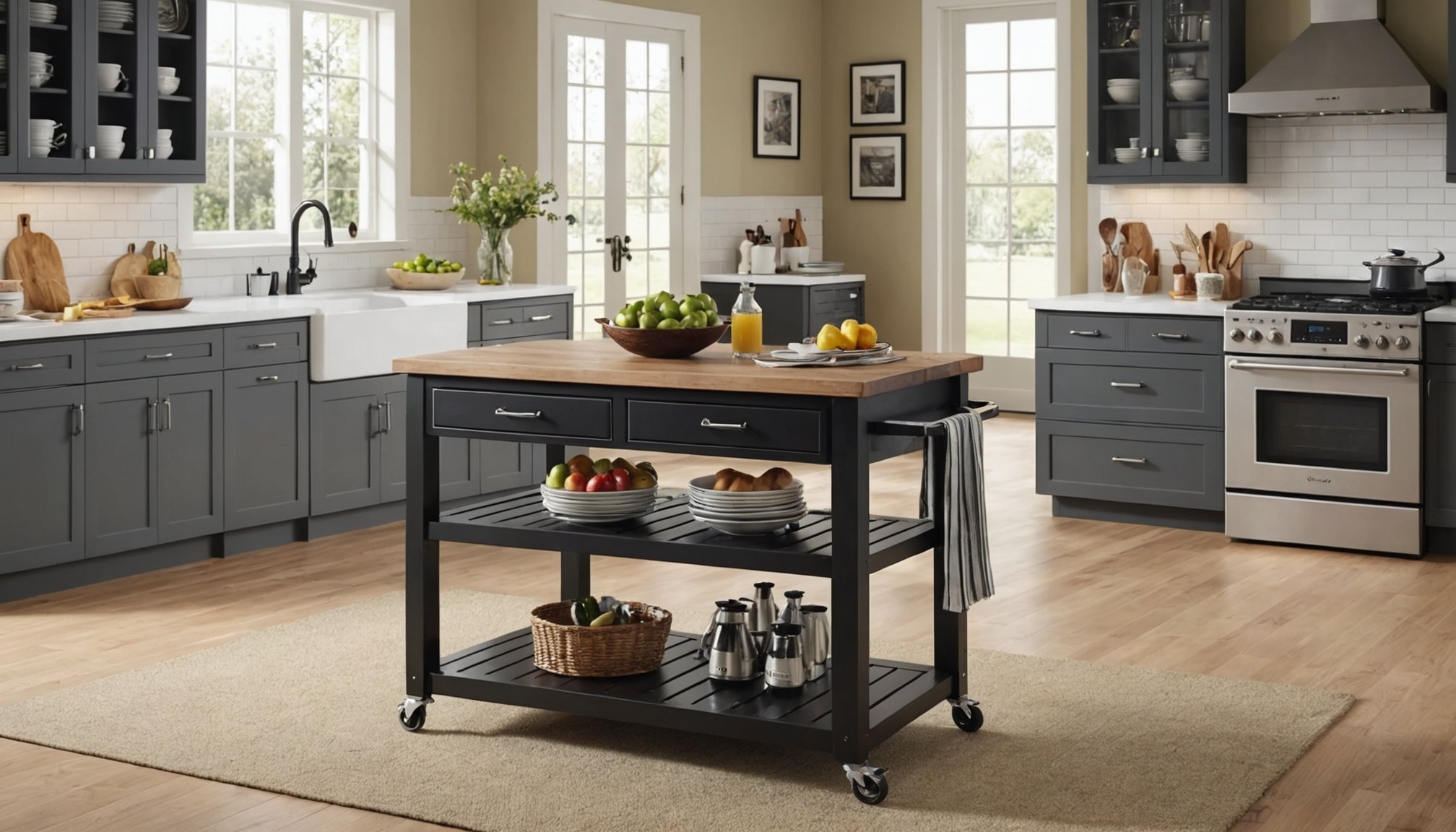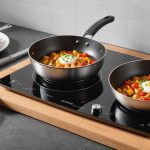Space is often a valuable asset in most homes, and especially in kitchens. It’s not uncommon for homeowners to yearn for extra room to prepare meals, dine, and store kitchenware. One versatile piece of furniture that can meet these needs is a kitchen island cart. Not only does it provide additional countertop and storage space, but it can also serve as a dining area. With so many options available in terms of design, materials, and price, choosing the ideal island cart can be overwhelming. This guide will walk you through the process, focusing on key factors such as size, storage capacity, materials, and mobility.
Island Cart Size and Space in Your Kitchen
Before you even begin to view the different kitchen island carts available, start by assessing the space in your kitchen. You want to ensure that the cart you select will fit comfortably without obstructing movement.
This might interest you : How to Select a Built-in Oven with the Most Precise Temperature Control?
Measure the floor area where you plan to place the cart. Keep in mind that you should leave at least 36 inches of clearance around the island for easy movement.
When considering size, also look at the height. Ideally, the cart’s top should align with your kitchen countertop. This allows for a seamless working area, especially if you’re going to use the cart for meal preparation.
In parallel : What Are the Top Espresso Machines Under $500?
In terms of serving as a dining area, evaluate the size of the cart against the number of people you typically host. A good rule of thumb is to allow at least 24 inches of width per person.
Storage Capacity of the Kitchen Cart
A kitchen island cart’s storage options can range from drawers and cabinets to shelves and racks. Knowing what you need to store can help determine the best storage features for you.
Drawers are perfect for smaller items such as utensils, while cabinets are great for larger objects like pots and pans. Shelves offer a view of what’s stored and can be used for items that are frequently accessed. Racks, on the other hand, are great for hanging towels or storing wine bottles.
If you plan to use the cart as a dining area, consider options with drop leaf extensions. These can be raised during meal times to provide extra table space and folded down afterwards to save space.
Material for Your Kitchen Island Cart
The material of your kitchen island cart can affect its look, durability, and price. Wood is a popular choice for its natural beauty and durability. However, it can be pricey and may require regular maintenance to keep it looking its best.
Metal carts, on the other hand, are sturdy and often cheaper than wood. They also offer a modern aesthetic that can complement contemporary kitchen decors.
The countertop material should also be considered. A butcher-block top is great for meal preparation, while a granite top adds a touch of luxury but with a higher price tag.
Mobility of the Island Cart
An island cart’s mobility is determined by whether it has wheels or not. Carts with wheels, also known as rolling carts, can be moved around the kitchen or even to other rooms. This is particularly handy if you entertain frequently or if you have a smaller kitchen where space is at a premium.
Stationary kitchen island carts, while not as flexible, often offer more storage options and can handle heavier loads. They’re a better option if you’re looking for a more permanent addition to your kitchen.
Price of the Kitchen Island Cart
Price is always a crucial factor when choosing any piece of furniture. Kitchen island carts are available in a variety of price ranges, depending on factors such as size, material, and features.
Before you start shopping, determine your budget. Remember that while higher-priced carts often offer better quality and more features, there are still plenty of affordable options that offer good value for money.
It’s important to balance your budget against your needs. If you need an island cart that doubles as a dining area and provides substantial storage, be prepared to spend a bit more. Conversely, if you’re simply looking for a bit of extra workspace, a cheaper, basic model might suffice.
Remember, buying a kitchen island cart is an investment towards improving the functionality and efficiency of your kitchen. Therefore, even as you consider the price, don’t compromise on the quality or the features that you need.
Durability and Maintenance of Your Kitchen Island Cart
One key aspect of a kitchen island cart that should not be overlooked is its durability, which is primarily determined by the material and construction quality.
If you choose a solid wood island cart, you are investing in a durable piece of furniture that can withstand heavy use over time. However, wood can be susceptible to scratches and stains, which means you’ll need to treat it with care. Regular maintenance such as cleaning and oiling can keep it in top shape. This can be time-consuming, but it’s definitely worth it as it elongates the lifespan of the cart.
On the other hand, metal carts are very robust and require less maintenance. They are also more resilient to heat and water, making them ideal for busy kitchens. However, metal carts can sometimes be less stable if the construction is lightweight, so it’s worth checking the construction quality and weight capacity.
The countertop material also impacts the durability and maintenance required. A wood top is perfect for those who want a natural look or need a surface for chopping and cutting. However, it needs regular oiling to prevent it from drying out or cracking. In contrast, a granite top is durable and easy to clean but can be expensive and heavy.
The type of wheels on a rolling kitchen island also affect its durability. Look for carts with sturdy, locking wheels that can handle a heavy load without buckling or breaking. Beware of cheaper models which might have wheels that are flimsy and prone to breaking under heavy weight.
Customer Reviews and Ratings
Before making your final choice, it is essential to read customer reviews and consider the rated stars. Reviews can provide valuable insights into the product’s quality, durability, and practicality that may not be apparent in the product description.
Pay attention to the common praises and complaints. For instance, if many reviews mention that the cart wheels are of poor quality, it might be a sign to steer clear of that model. Similarly, if customers frequently praise the cart’s storage space or the convenience of its drop leaf, these features might make the model worth considering.
Reviews can also give you an idea of the customer service provided by the manufacturer. If a product has many negative reviews citing poor customer service, it may be a red flag.
Remember though, even the best products may have a few negative reviews. It’s more about the overall rating and the common themes in the reviews. Look for products that have great reviews overall and total votes that indicate a large number of people are satisfied with their purchase.
Conclusion
Choosing a kitchen island cart that doubles as a dining area requires consideration of several factors. Assess the space in your kitchen to determine the ideal size and whether a mobile kitchen cart would be more beneficial. The cart’s storage capacity, material, durability, and cost are also important factors to consider.
Moreover, always check customer reviews and ratings before making your final decision. Remember, an island cart can significantly improve your kitchen’s functionality, so choosing wisely is crucial. Whether you opt for a solid wood island with a drop leaf and spice rack or a metal cart with a towel rack and storage cabinet, your kitchen will undoubtedly benefit from the additional workspace and dining area.











